The Mercedes-AMG One hypercar (which effectively uses Formula 1 car technology) cedes its technological principle to the imminent AMG plug-in hybrids, which will adopt the designation E Performance , starting with the GT 4 Doors (with V8 engine), but also the successor of the Mercedes-AMG C 63, which will have the same modular system. The chief engineer explains to us the technical principles of the two plug-in hybrids that will be on the road as early as 2021.
One after another, the most hardened bastions of the brands venerated by millions of “petrolheads” (read car fanatics with gasoline engines almost always sporty) fall, as the electrification of the automobile takes irreversible steps.
Now it's AMG's turn to be about to launch its first 100% electric model (still this year) based on the new EVA (Electric Vehicle Architecture) platform and also the first high-performance plug-in hybrid vehicles (PHEV) under the label E Performance. In the latter case, the technology principles derive from the One (which will reach the hands of the first customers within a few months) which are transferred to the Mercedes-AMG GT 4 doors and to the C 63 which will also reach the market in 2021.

Naturally, the hyper sports car was designed for “other flights”, with its five engines: two electric on the rear axle to complement the 1.6 liter 1.6 V6 engine (inherited from the F1 W07 Hybrid) and two in the front, for a maximum power greater than 1000 hp, 350 km/h of top speed, 0 to 200 km/h in less than six seconds (better than the Bugatti Chiron) and a price, to match, of more than 2.8 million euros.
Of the first all-electric AMGs — to be introduced this year — it is only known that they will use two motors (a permanent magnet synchronous motor per axle and hence four-wheel drive), which will use a 22 kW on-board charger, they can be charged in direct current (DC) up to a maximum of 200 kW. In addition, they will be able to achieve performance at the level of those of models with the 4.0 V8 twin-turbo engine, namely a sprint from 0 to 100 km/h well under four seconds and a top speed of 250 km/h.
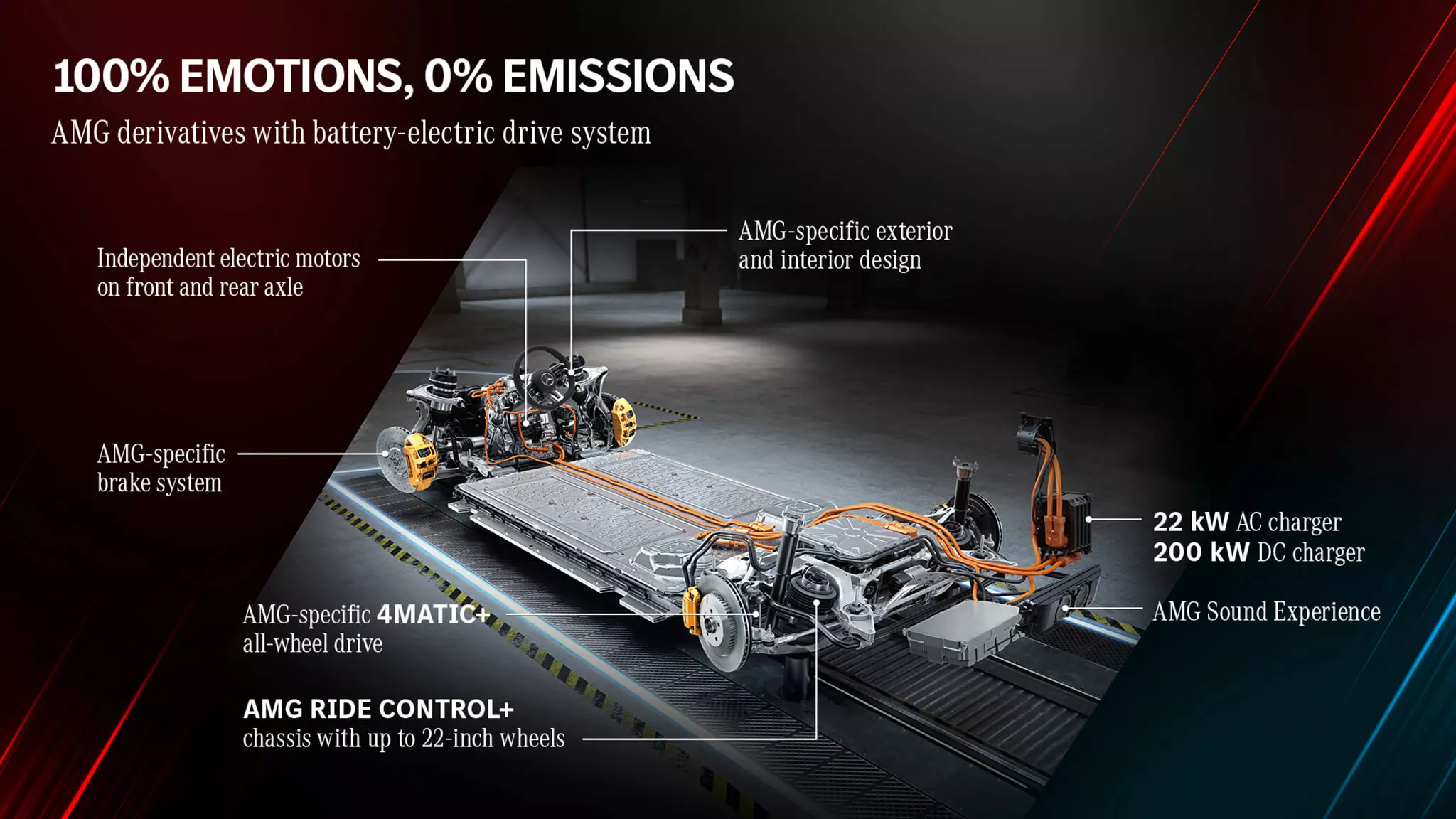
Paradigm change
To adapt to the new times, AMG adapted its headquarters in Affalterbach, which now includes a test center for high-voltage batteries and electric motors, as well as a competence center for the production of plug-in hybrid engines.
On the other hand, cooperation with the engineers of the Mercedes-AMG F1 Petronas team was reinforced so that this technology transfer could be made as direct and fruitful as possible.

“AMG wants to keep up with the evolution of the times, electrifying its offer without giving up its position. We will continue to produce high-performance cars and take advantage of this to gain a younger customer base and also a higher percentage of female customers”, explains executive director (CEO) Philipp Schiemer during an exclusive interview by Zoom, in which I key technology concepts are also introduced with the help of Jochen Hermann, technical director (CTO) of AMG.
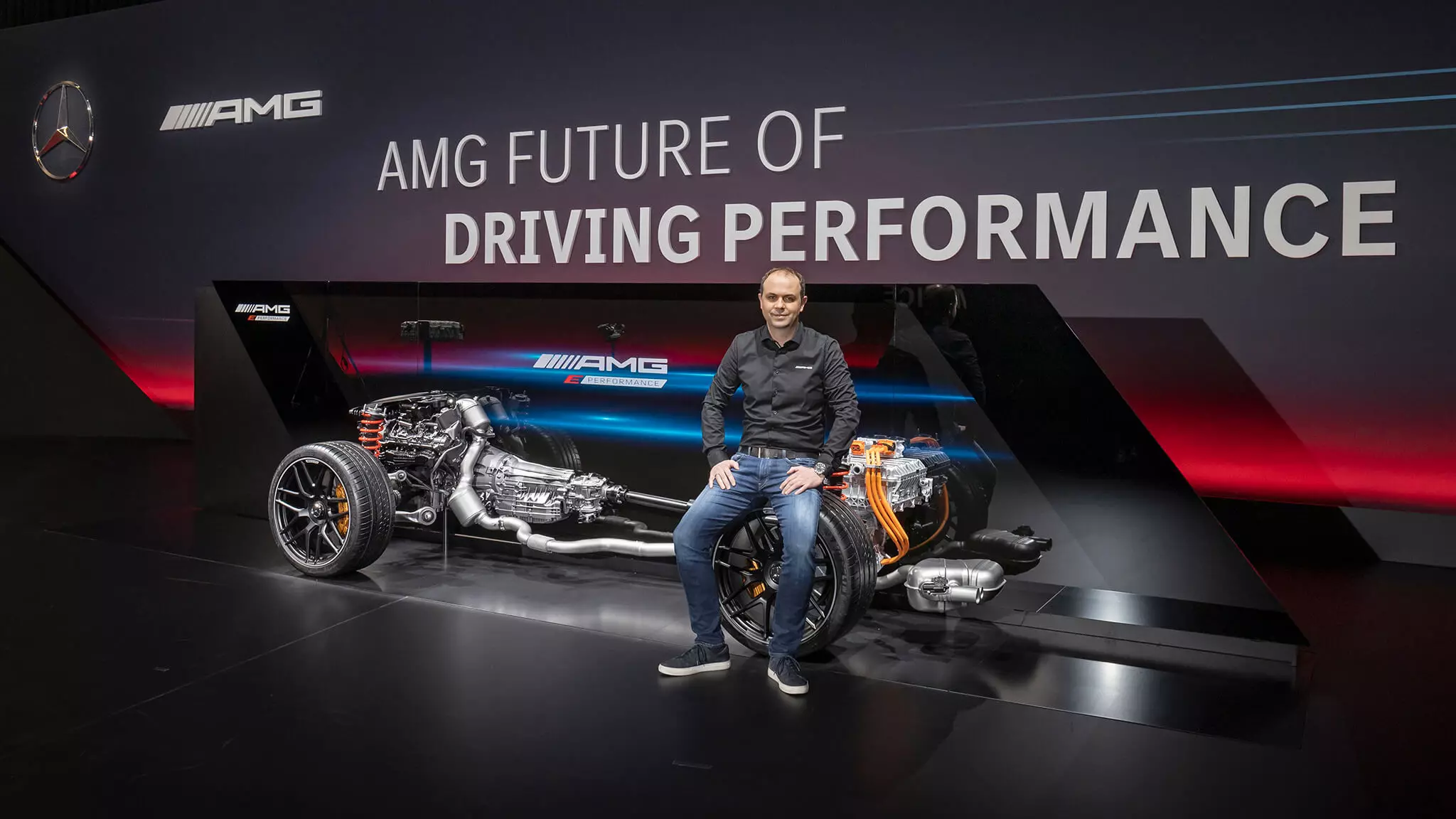
The first of the innovations in the upcoming plug-in hybrids has to do with the placement of the electric motor, as Hermann explains: “unlike conventional PHEVs, in this new system of ours the electric motor was not installed between the gasoline engine (ICE) and the transmission but on the rear axle, which has several advantages, of which I highlight the following: the distribution of weight between the front and rear of the car becomes more equitable – at the front, in the AMG GT 4 Doors, we will already have the 4.0 V8 engine and the nine-speed AMG Speedshift gearbox – with more efficient use of electrical torque that is delivered faster, allowing power to convert to acceleration almost instantly (without having to go through the gearbox). And the allocation of energy via the limited-slip differential to each of the rear axle wheels is faster, causing the car to put power to the ground faster, clearly benefiting its agility in corners.”
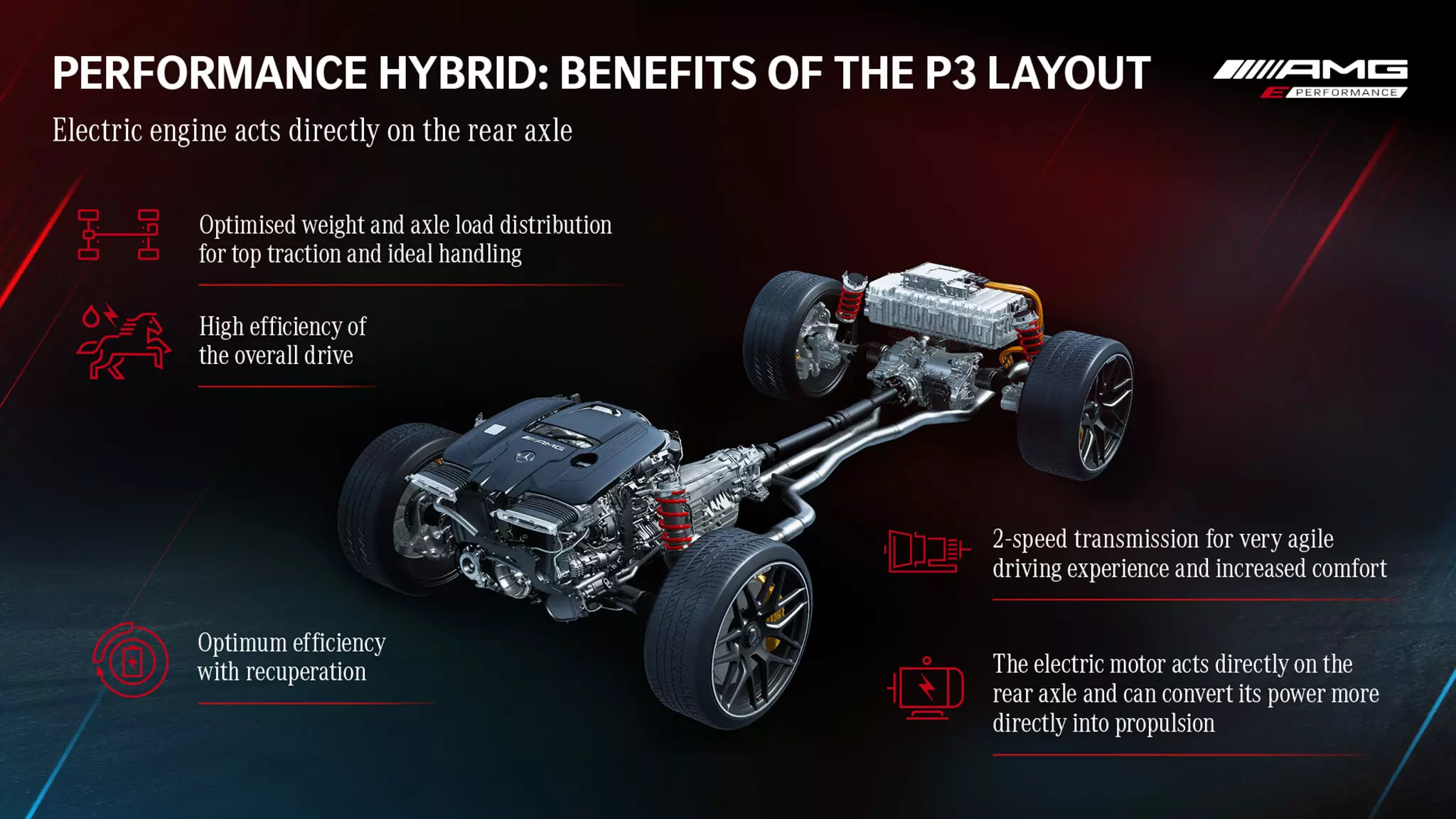
Two engines, two gearboxes
The rear electric motor (synchronous, permanent magnet and producing a maximum of 150 kW or 204 hp and 320 Nm) is part of the so-called Electric Drive Unit (EDU or Electric Propulsion Unit) which also comprises a two-speed gearbox and a electronic self-blocking.
An electric alternator shifts into 2nd gear at the latest at 140 km/h, which corresponds to an electric motor speed of around 13,500 rpm.
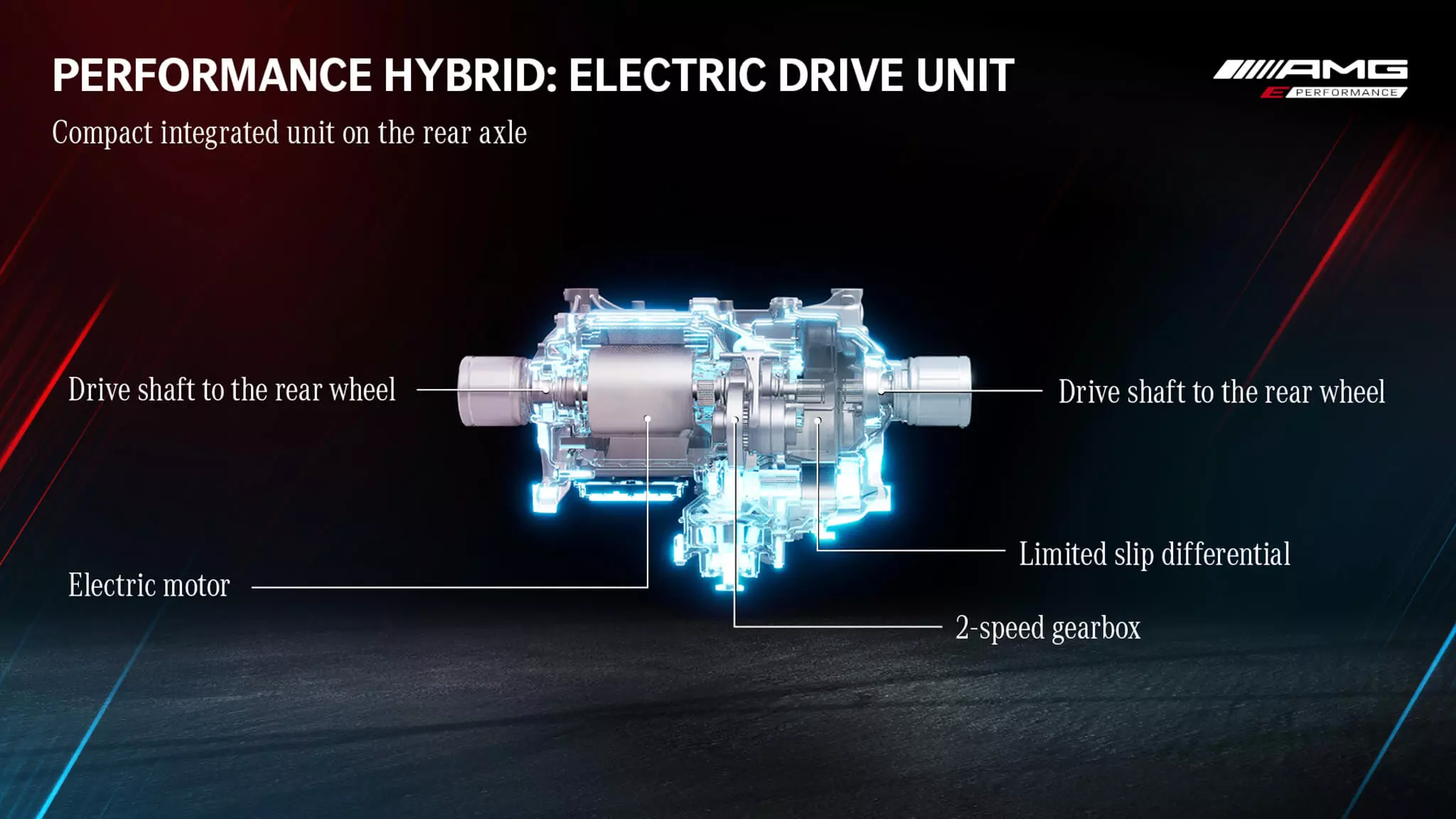
high performance battery
One of the prides of the AMG team of engineers is the new high-efficiency battery (also mounted on the rear axle), made up of 560 cells, which delivers 70 kW at continuous power or 150 kW at peak (for 10 seconds).
It was developed “in-house” with great support from the Mercedes Formula 1 team, as Hermann assures us: “the battery is technically similar to that used in Hamilton and Bottas' car, it has a capacity of 6.1 kWh and weighs only 89 kg. It achieves an energy density of 1.7 kW/kg which is roughly double that of high voltage batteries without direct cooling of conventional plug-in hybrids”.
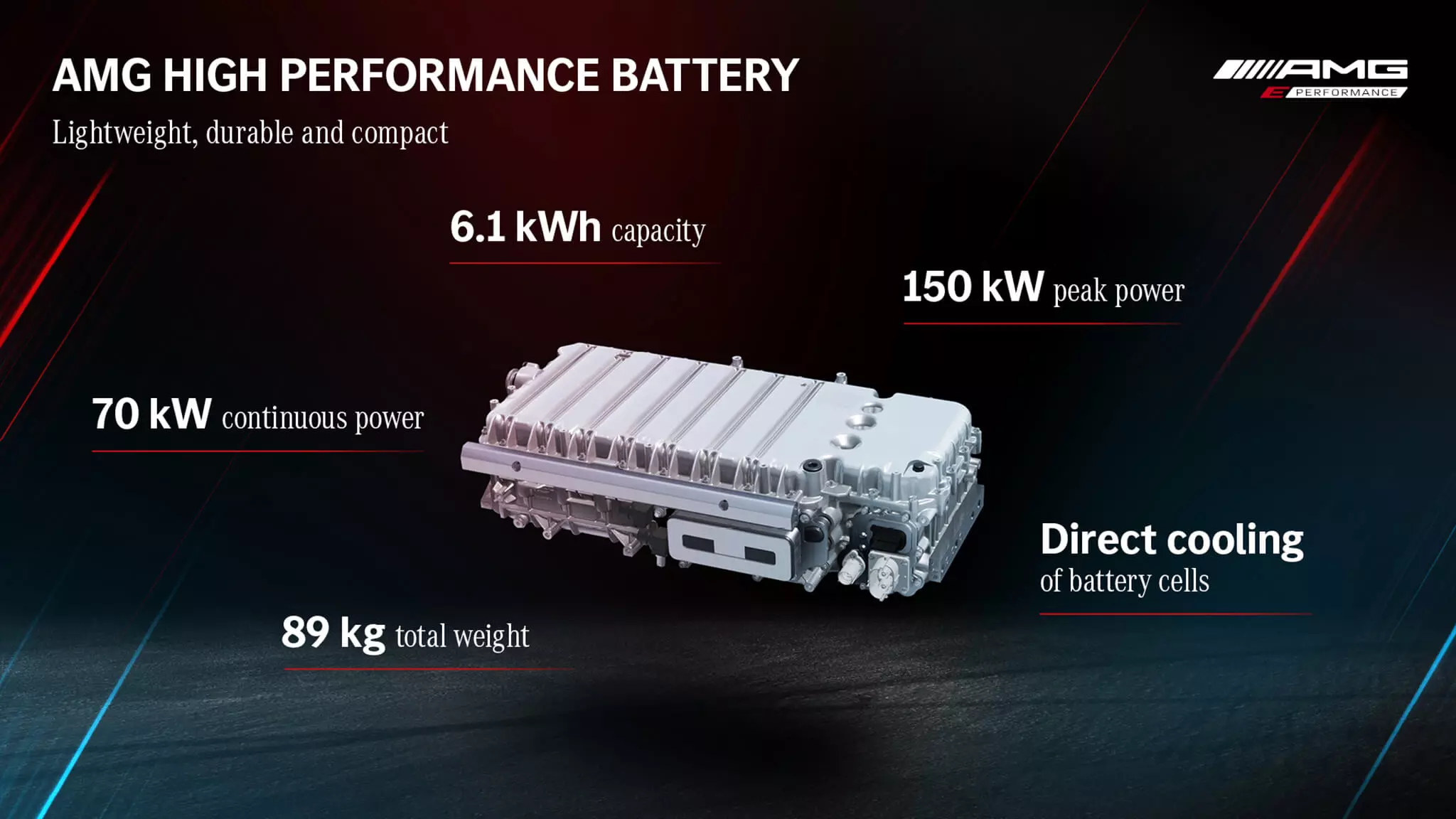
Briefly explained, the basis for the high efficiency of the 400 V AMG battery is this direct cooling: for the first time, the cells are individually cooled by being permanently surrounded by a coolant based on an electrically non-conductive liquid. The approximately 14 liters of refrigerant circulates from top to bottom throughout the battery, passing through each cell (with the help of a high-performance electric pump) and also flowing through an oil/water heat exchanger connected directly to the battery.
In this way, it is possible that the temperature is always kept at a temperature of 45°C, in a stable and consistent way, regardless of the number of times it is charged/discharged, which does not happen in hybrid systems with conventional cooling systems, whose batteries lose Yield.
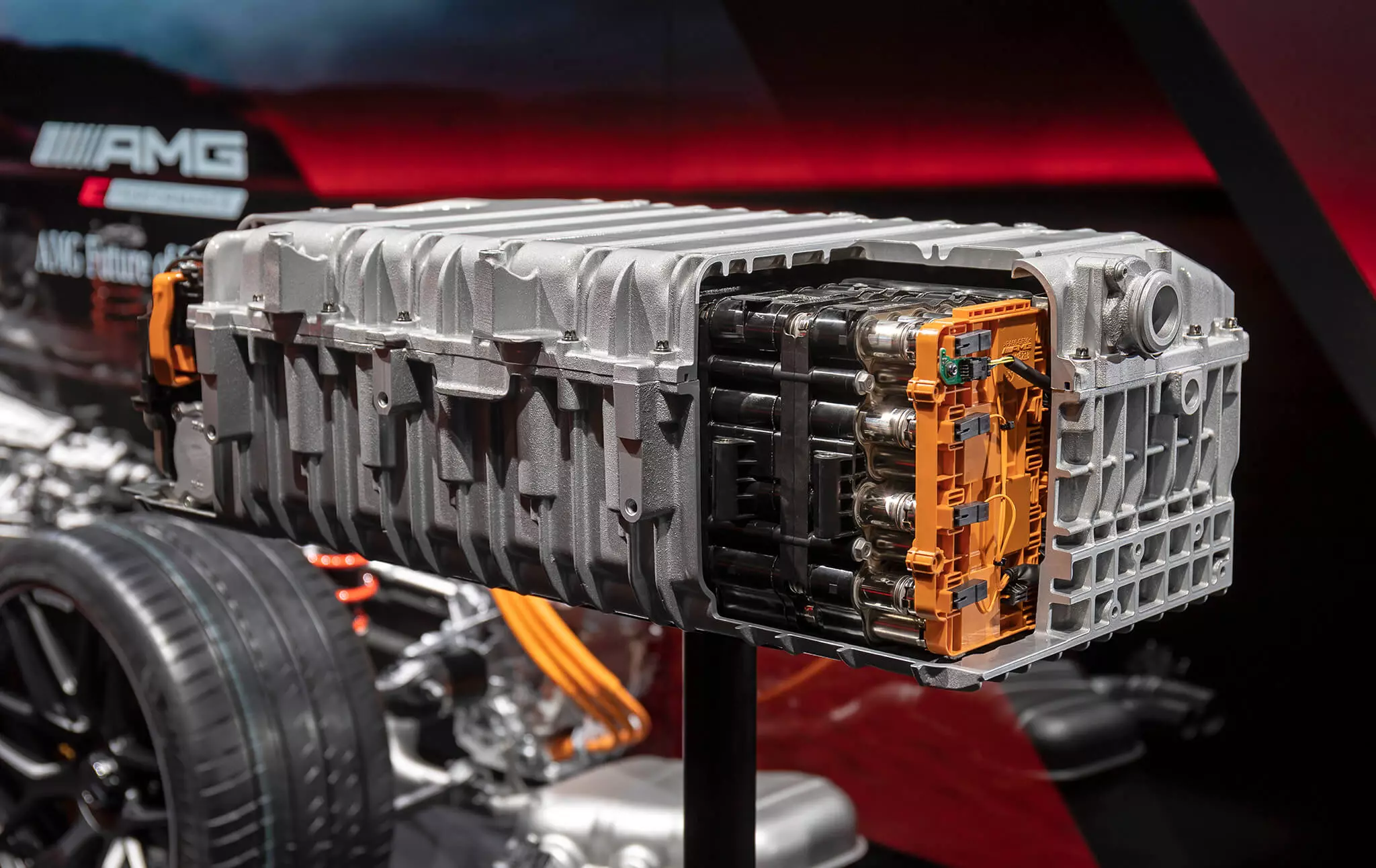
As the technical director of AMG explains, "even in very fast laps on the track, where accelerations (which drain the battery) and accelerations (which charge it) are frequent and violent, the energy storage system maintains performance."
As in F1, the “electric push” is always available thanks to the powerful energy recovery system and because there is always a reserve of energy for full or intermediate accelerations, even when the battery is low. The system provides the usual driving modes (Electric up to 130 km/h, Comfort, Sport, Sport+, Race and Individual) that adjust engine and transmission response, steering feel, damping and sound, which can be selected via the controls in the center console or the buttons on the steering wheel face.
The four-wheel drive system has, of course, the AMG Dynamics system that uses sensors to measure speed, lateral acceleration, steering angle and drift, adjusting the setting of the car according to what is most appropriate for each moment and depending on the Basic, Advanced, Pro and Master programs that combine with the different driving modes mentioned above. On the other hand, energy recovery has four levels (0 to 3), which can reach a maximum recovery of 90 kW.
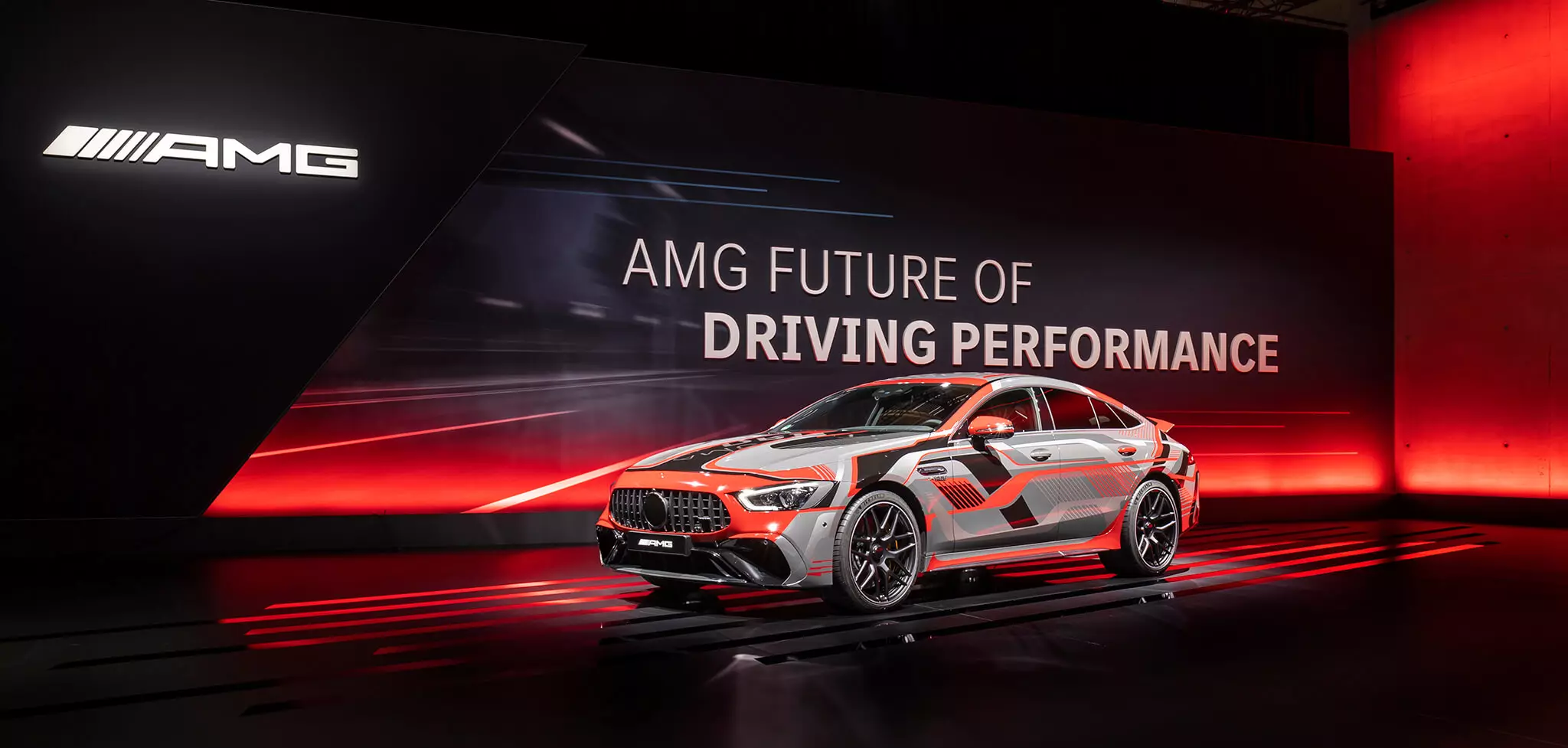
Mercedes-AMG GT 4 Doors E Performance, the first
All technical data for the future Mercedes-AMG GT 4 Doors E Performance have not yet been released, but it is already known that the maximum power of the system will exceed 600 kW (ie above 816 hp) and that the peak torque will exceed 1000 Nm, which will translate into an acceleration from 0 to 100 km/h in less than three seconds.
On the other hand, the on-board charger will be of 3.7 kW and the electric autonomy of any of the plug-in hybrids was not announced, only knowing that the priority was given to the support of services and not to covering a long driving distance. emission-free.
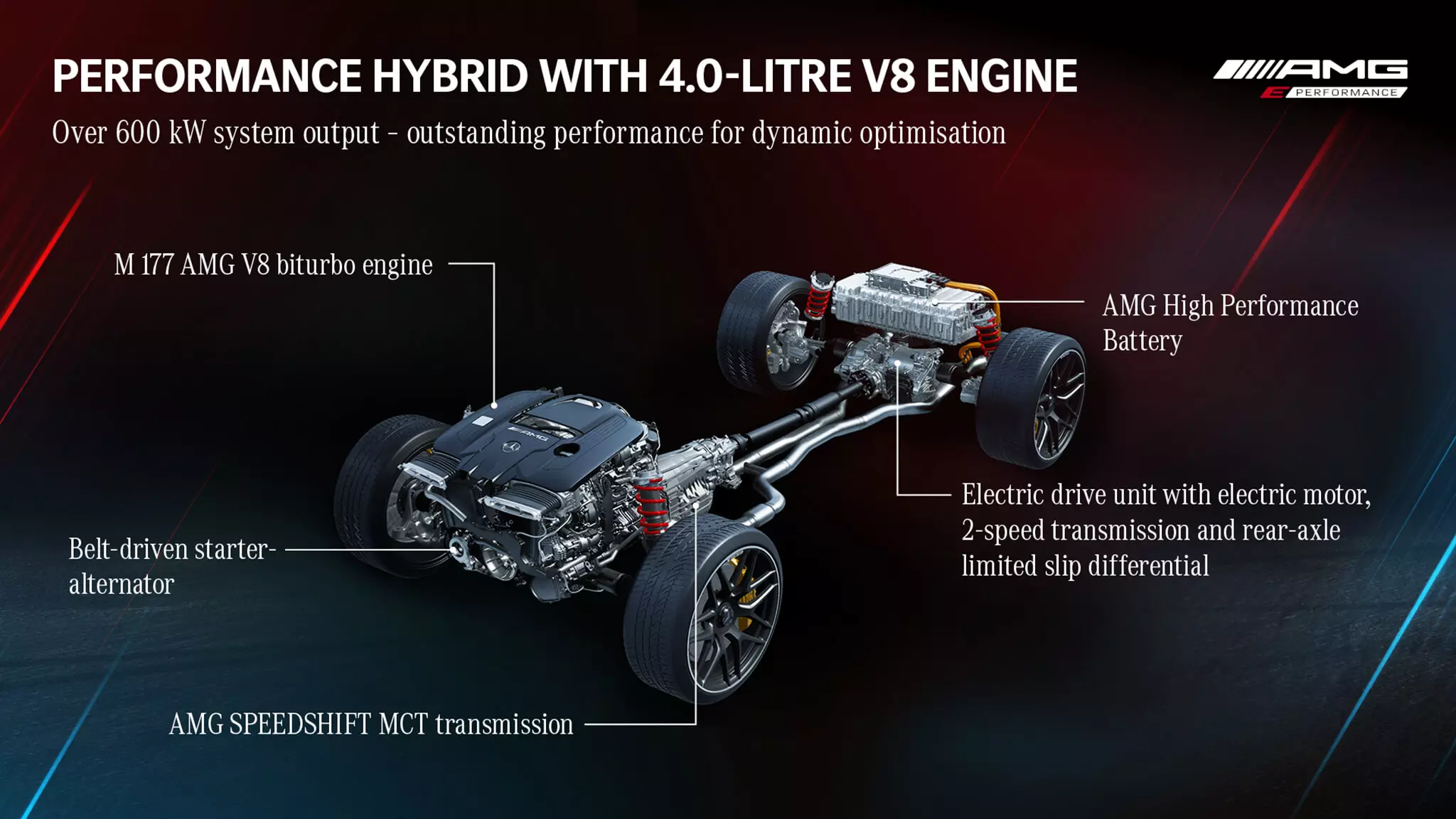
Mercedes-AMG C 63 will also be E Performance
“You can expect a successor to the C 63 with the same plug-in hybrid system that will be as dramatic and dynamic as the current model with a V8 engine,” guarantees Philipp Schiemer, even if four cylinders are “lost”.
This is because the petrol engine is the 2.0 l in-line four-cylinder (M 139) that remains world champion in terms of power in its class, to date only installed crosswise in the Mercedes-Benz “45” family of compact models. AMG But here it starts to be longitudinally integrated into Class C as well, which had never happened here.
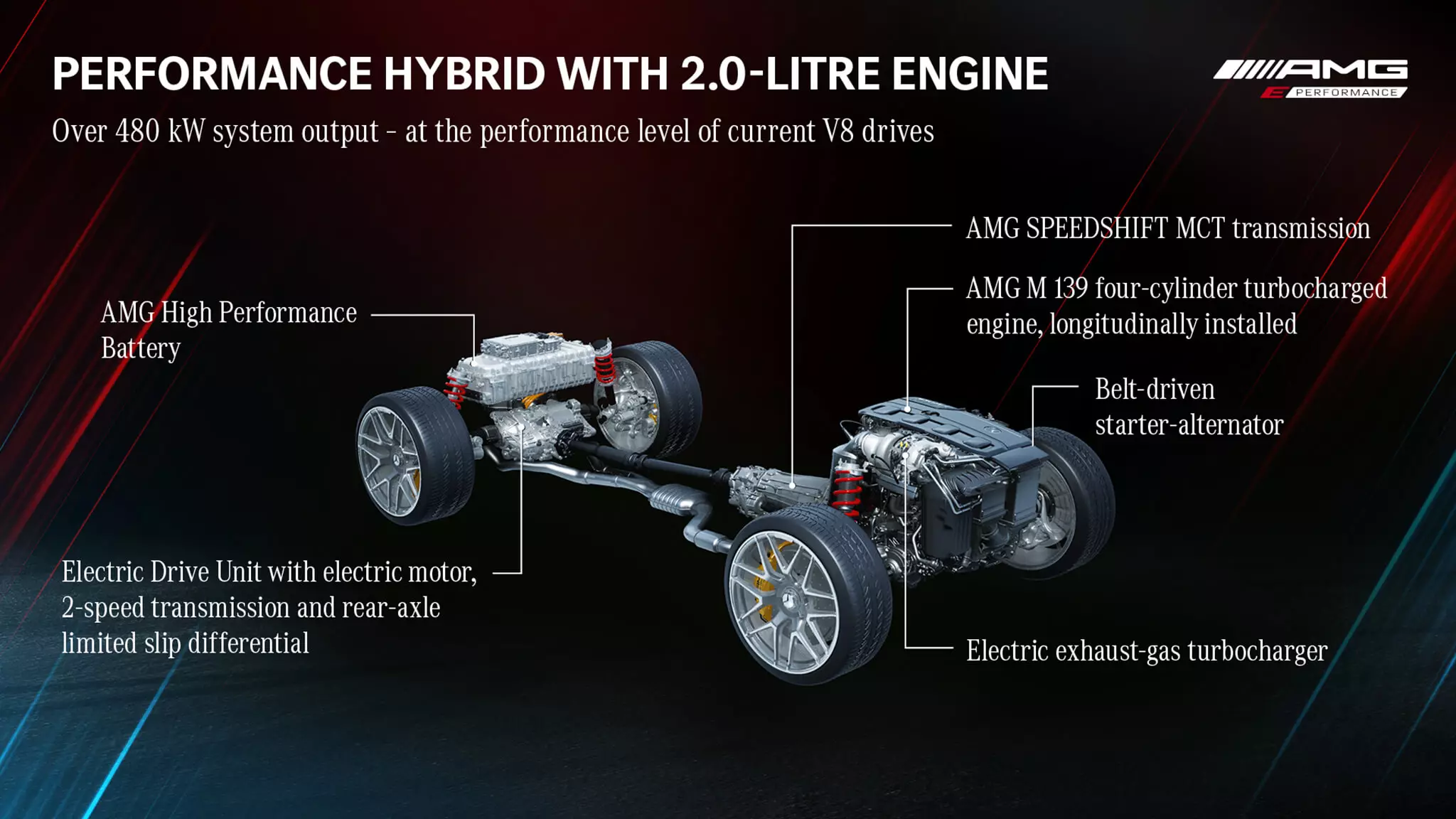
It is known, at the moment, that the gasoline engine will have a power greater than 450 hp, which must be combined with the 204 hp (150 kW) of the electric motor for a total efficiency that should not be inferior to that of the current more powerful version of the C 63 S, which is 510 hp. At least the performance will not be inferior, as the German engineers promise less than four seconds from 0 to 100 km/h (vs. 3.9 s of today's C 63 S).
Another world first in series production cars (but used in F1 and One), but considering the whole industry, is the electric exhaust gas turbocharger that was applied to the 2.0 l engine.
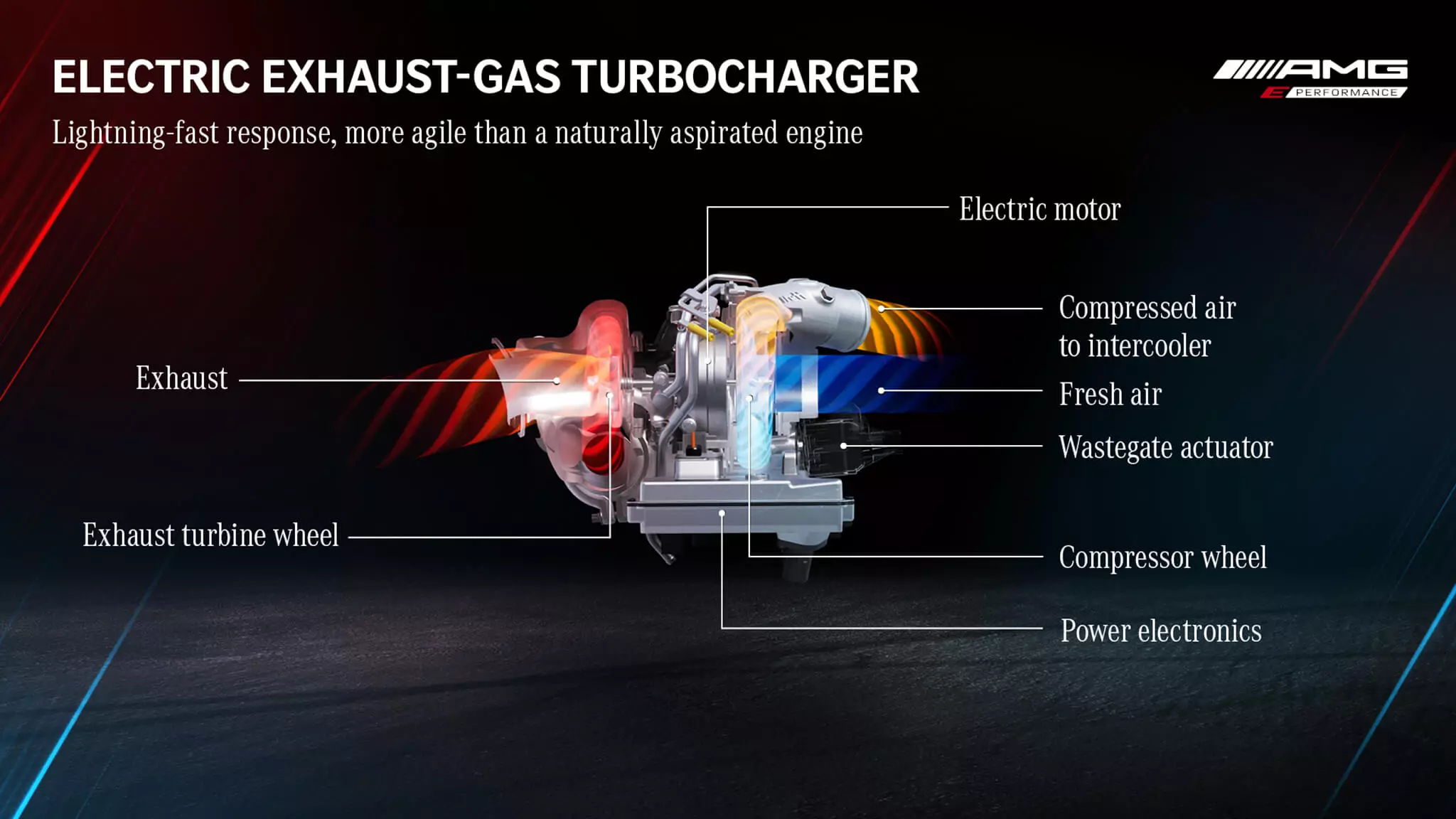
As Jochen Hermann explains, “the E-turbocompressor allows the best of both worlds, that is, the agility of a small turbo with the peak power of a large turbo, eliminating any trace of delay in response (so-called turbo-lag) . Both the four- and eight-cylinder engines use a 14 hp (10 kW) engine-generator that starts the gasoline engine and powers auxiliary units (such as air conditioning or headlights) in situations where, for example, the car is stopped at a traffic light and the high voltage battery is empty to supply the vehicle's low voltage network”.
